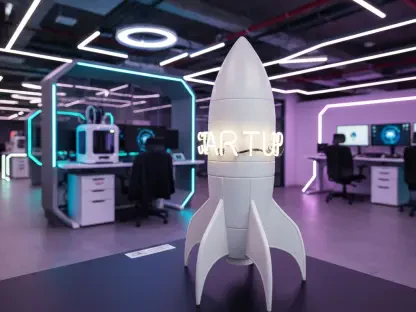Diving into the ever-evolving world of AI, I’m thrilled to sit down with Vijay Raina, a renowned expert in enterprise SaaS technology and software design. With his deep insights into software architecture and thought leadership in the field, Vijay is the perfect person to unpack the potential makeover of Google’s Gemini AI app. Today, we’ll explore the rumored shift to a visually engaging interface, the strategic importance of this redesign, and how it positions Gemini in the competitive AI landscape. Let’s get started.
What can you tell us about the potential redesign of the Gemini AI app’s interface and how it differs from its current setup?
I’ve been following the reports about Gemini moving away from its traditional chatbot-style interface to a scrollable feed design. The current look is very text-heavy and functional, focusing on direct user input, whereas this new concept introduces a more dynamic, visual experience with suggested prompts and striking imagery. It’s a significant shift toward user engagement, prioritizing discovery over pure utility. Shortcut buttons like “Create Image” or “Deep Research” are also repositioned higher on the screen, making key features more accessible right from the start.
How do you think this scrollable feed with suggested prompts and vibrant photos aims to enhance user interaction?
The idea behind the scrollable feed seems to be about inspiration and accessibility. By presenting users with creative prompts like “Teleport me to deep space” or “Turn my drawing into a storybook,” paired with eye-catching visuals, the app nudges users to explore Gemini’s capabilities in a playful way. It lowers the barrier to entry—users don’t have to think too hard about what to ask. Instead, they’re guided toward fun, practical, or imaginative use cases, which could make the app feel more approachable and engaging, especially for newcomers to AI tools.
Why do you believe Google is leaning toward a more visually focused design at this point in time?
I think it’s a strategic move to stand out in a crowded AI market. Visual appeal is a powerful way to capture attention, especially when competing with minimalist designs like ChatGPT’s. A visually rich interface can communicate what the app is capable of without much explanation. Plus, with the recent success of Gemini’s AI image model, Nano Banana, which pushed the app up the App Store charts, Google likely sees an opportunity to double down on creative, visual features to keep that momentum going and appeal to a broader consumer base.
Can you shed light on how these potential changes were discovered and what that tells us about their reliability?
From what I’ve read, these updates were uncovered by reverse-engineering the app’s code in a recent version of the Gemini Android app. Essentially, tech enthusiasts dug into the underlying structure and enabled a hidden home screen that isn’t yet live for public use. While this gives us a sneak peek, it’s not a guarantee of what the final product will look like. Companies often experiment with multiple designs in their code, and not all make it to release. That said, these findings are often a strong indicator of direction, especially when they align with market trends and user demands.
What’s the broader significance of Google experimenting with this revamp right now in the competitive AI space?
Timing is everything in tech, and this revamp feels like a response to the intense competition in the AI app market. With other players gaining traction through innovative features, Google needs to keep Gemini fresh and relevant. The climb in App Store rankings thanks to recent updates shows they’ve got a strong foundation, but maintaining that edge requires constant evolution. A visually engaging redesign could be a way to differentiate Gemini, not just functionally but emotionally, by making it a more delightful experience compared to rivals.
How do these suggested prompts, like “Brainstorm out loud with Live” or “Send me a daily news roundup,” play a role in shaping user experience?
These prompts are cleverly designed to spark curiosity and guide users toward specific interactions. They act as a bridge between the user and the app’s full potential. For instance, “Brainstorm out loud with Live” suggests a collaborative, real-time use case, while “Send me a daily news roundup” highlights practical, everyday value. They’re essentially tutorials disguised as invitations, helping users—especially those unfamiliar with AI—understand how to leverage the tool in meaningful ways, which can build confidence and encourage regular use.
What is your forecast for the future of AI app interfaces based on trends like this potential Gemini redesign?
I believe we’re heading toward a future where AI app interfaces will prioritize user engagement through intuitive, visually driven designs. The shift we’re seeing with Gemini—assuming it goes live—reflects a broader trend of making complex technology feel accessible and fun. As AI capabilities grow, the challenge will be to balance visual appeal with functionality, ensuring users aren’t overwhelmed by options but still feel empowered to explore. I expect more apps to adopt interactive, discovery-based elements like prompts or feeds, as they compete not just on power but on personality and ease of use.









